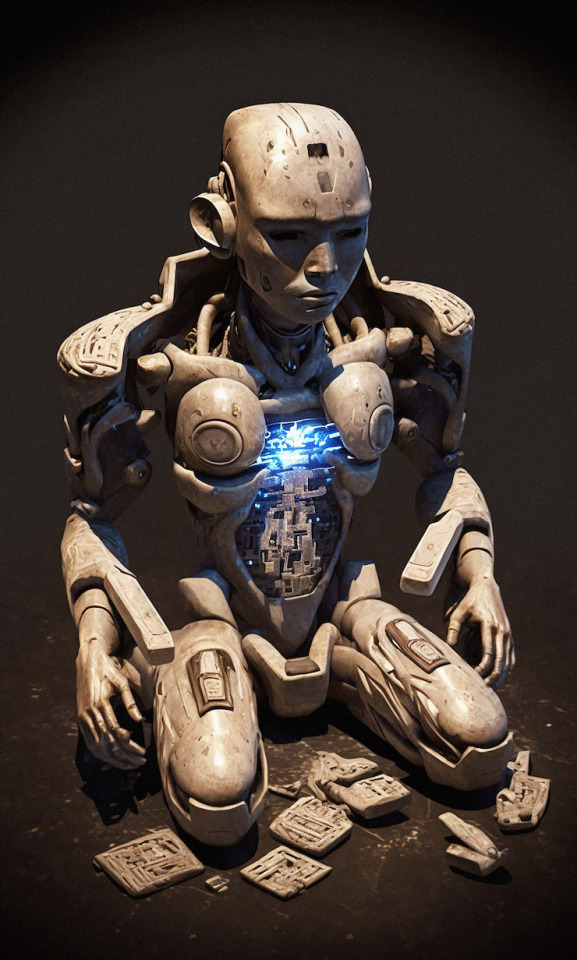#pre-columbian
Photo
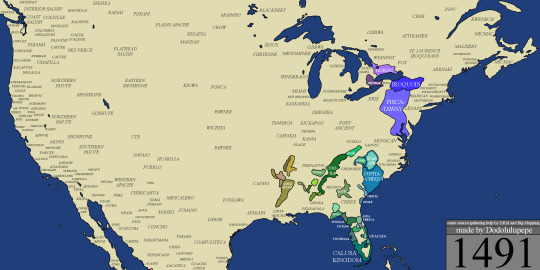
The continental United States in 1491, the year before Columbus' arrival, showing both tribal units and centralized states.
421 notes
·
View notes
Text

Basalt sculpture of the Taino people of the Caribbean, representing a zemi (deity or another supernatural being), perhaps Maquetaurie Guayaba, lord of the Land of the Dead. Artist unknown; between 800 and 1500. Now in the Walters Art Museum, Baltimore. Photo credit: Walters Art Museum.
#Indigenous Peoples Day#art#art history#indigenous peoples#indigenous art#Taino#Caribbean art#Taino art#Pre-Columbian#sculpture#stonework#basalt#indigenous religions#Walters Art Museum
204 notes
·
View notes
Photo

A Zapotec Terracotta Figural Urn of the Butterfly God (Ītzpāpālōtl) found at Monte Alban in Oaxaca, Mexico, Circa 200-600 AD. Sold at sotheby's in 2017 for $200,000
#zapotec#olmec#mayans#itzpapalotl#monte albán#oaxaca#pre-columbian#mexico#central america#indigenous people#american indians#atlantis#terracotta#sothebys#art
420 notes
·
View notes
Text
Did the hunter gatherers of Patagonia befriend foxes? Evidence from Argentina suggests the (now extinct) Dusicyon avus was domesticated as an animal companion, with one found buried alongside their person.
35 notes
·
View notes
Photo

Temple of Quetzalcoatl | Charles B. Waite, 1904
745 notes
·
View notes
Photo
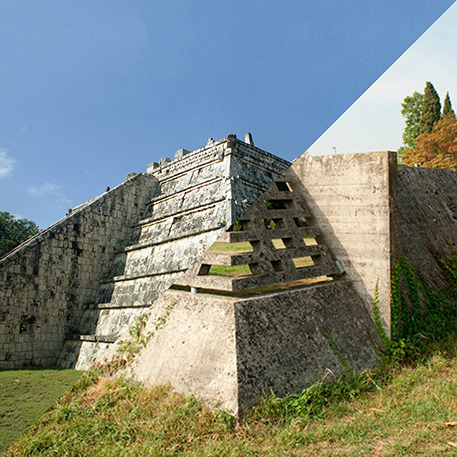
Osario | High Priest's Temple, Chichén Itzá, Mexico, 750-900 AD
VS
Carlo Scarpa, Tomba Brion, Cimitero di San Vito, Altivole, Italy, 1974-1978
#osario#temple#Chichén Itzá#mexico#Maya#yucatan#Maya sites#archaeology#america#Archaeoastronomy#Pre-Columbian#carlo scarpa#tomba brion#brion cemetery#concrete#italy#italia#Altivole
78 notes
·
View notes
Text

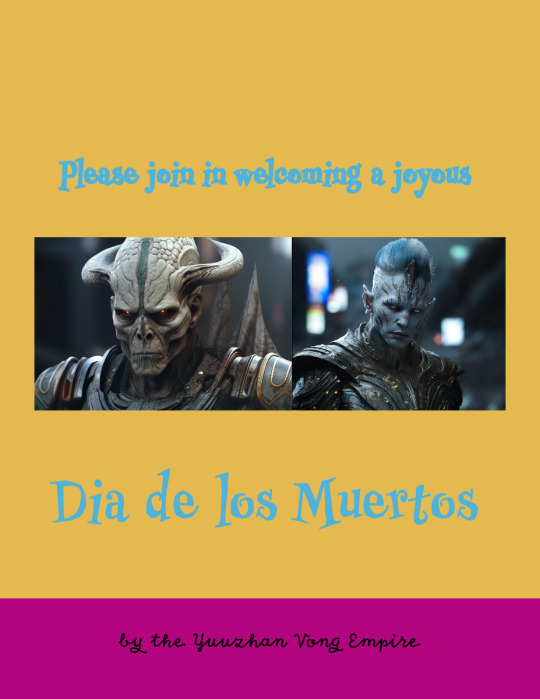

SWAG77 celebrates Dia de los Muertos (Day of the Dead) by featuring the Star Wars Yuuzhan Vong or the Grysks, known as the Yuuzhan Vong Lite. Check out their true appearance, unique humanoid masquers and elaborate celebratory Dia de Muertos costumes!
The Yuuzhan Vong honor their dead with great appreciation in celebration to travel across the rainbow bridge onto the next life. Dying is a natural part of life and based on their Gods.
In real life, the Yuuzhan Vong are based off the Aztec and Mayan Pre-Columbia Meso-American and South American cultures. Unsure Disney Lucasfilm will keep that attribute of them since they are villains. But we will keep it.
The top image is a high priestess
The middle image is a warrior
The last image is a bureaucrat-administrator.
#star wars#yuuzhan vong#grysks#dia de los muertos#day of the dead#dia de muertos#pre-columbian#meso-american#south american#aztec#mayan#disney#lucasfilm
6 notes
·
View notes
Text
Quite a difference in age between the temple remains and the human burials. I firmly believe that sacred sites often remain sacred, even after the passage of millennia.
21 notes
·
View notes
Text
Aztecs versus Malians
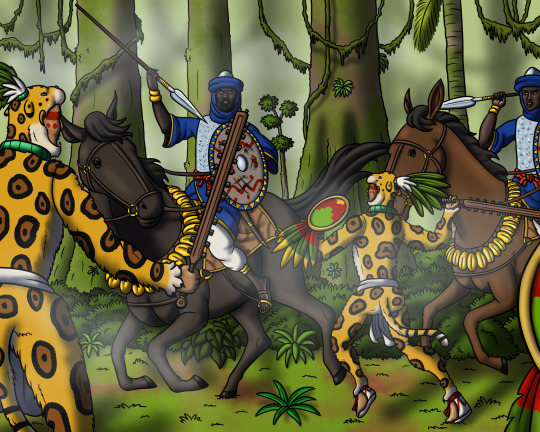
Aztec jaguar warriors fend off an invading force of Malian cavalry from West Africa deep in the rainforests of Mesoamerica!
This of course never happened as far as we know, but the Malian Mansa (Emperor) Musa did claim that his predecessor, Muhammad ibn Qu, abdicated his throne to lead a fleet of 2,000 ships into the Atlantic Ocean, never to return. This anecdote has invited speculation that Mansa Muhammad and his expedition may have reached the New World, although evidence for such conjecture remains undiscovered as of yet. But if they had, a confrontation like this could totally have taken place afterward!
#aztec#mesoamerican#native american#pre-columbian#mali#west african#african#medieval#black people#dark skin#people of color#poc#alternate history#battle#illustration#digital art#art
4 notes
·
View notes
Text

American Holocaust — David E. Stannard
#i think about (and other stories like this) a lot#pre-columbian#child rearing#codes of friendship#aztec#mexican#iroquois#indians of california#hospitality#cartier#1500s#american holocaust#American Holocaust: The Conquest of the New World#holocaust#David E. Stannard#history#nonfiction#spanish#north america#south america#native#indigenous#mexico#atypicalreads#nsnv#cw genocide#cw violence#colonialism#central america
2 notes
·
View notes
Text
Today you can go to a mini spring vacation to a particular zone of Mexico City: la Plaza de las Tres Culturas.
This guided tour by CyArk, takes you through the architectural styles and the long and rather violent history: from the Spanish conquest, to the 1968 students movement, to the earthquakes and the restoration of the cultural significance of this place.
So, click the link and stand in the Plaza de las Tres Culturas, surrounded pre-columbian, colonial, and modern architecture. The tour guides speak in Spanish but everything has English and Spanish subtitles, and there's not only historians and guides, but testimonies from survivors of the Tlatelolco Massacre.
There are also several online resources to learn more, at the end of the tour.
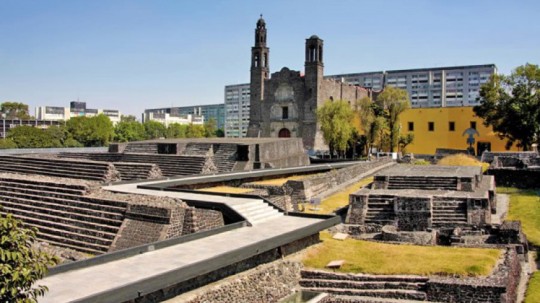
#cyark#mexico city#tlatelolco#plaza de las tres culturas#2 de octubrer 1968#mexico#spanish colonial#pre-columbian#mario pani#1960s
12 notes
·
View notes
Text

Clovis point, fashioned from chert and belonging to the Clovis culture (so named from early 20th century archaeological finds near Clovis, New Mexico) that spread throughout North America following the Last Glacial Period. Clovis points are distinguished by manufacture through the pressure flaking technique and by fluting near the base. Manufactured between 11,500 and 9,000 BCE and found in Sevier County, Utah; now in the Natural History Museum of Utah, Salt Lake City.
#prehistory#prehistoric#Pre-Columbian#Paleoamerican#Paleoindian#Clovis#Clovis culture#Clovis point#ancient weapons#archaeology#artifact#spearpoint#Natural History Museum of Utah#Stone Age
336 notes
·
View notes
Photo

‘Chimú Funerary Attire’, Imperial Epoch (1300 AD-1532 AD), at the Museo Larco in Lima, Peru
These gold adornments once belonged to a major leader of the mud brick city known as Chan Chan, the capital of the Chimú Empire. The feathers on the crown, breastplate and epaulettes express the relationship between birds and the sun, in the celestial world.
#chimu#moche#inca#peru#pre-columbian#south america#gold#jewelry#andean#atlantis#indigenous people#american indians
26 notes
·
View notes
Text
Step into the enigmatic world of the Chachapoya Cloud Warriors, who once reigned supreme over the misty cloud forests of northern Peru, and the ancient mysteries surrounding their culture and disappearance in a saga spanning over a thousand years. Recent archaeological findings from the fortress city of Kuelap and the cliffside necropolis at the Lagoon of the Condors, reveal bizarre funerary practices and architectural wonders shrouded in controversy.
This article attempts to unravel the many theories surrounding the secrets of the Chachapoya mummies, silent witnesses to a bygone era. Evidence of their bizarre funerary practices, architecture and cultural practices, all anomalous within pre-Columbian societies, have inspired several theories trying to understand where this culture originally originated.
#Chachapoya#cloud warriors#mummies#Kuelap#migration#DNA#Viracocha#Brien Foerster#elongated skulls#sarcophagi#pre-Columbian
19 notes
·
View notes
Text
27 notes
·
View notes
